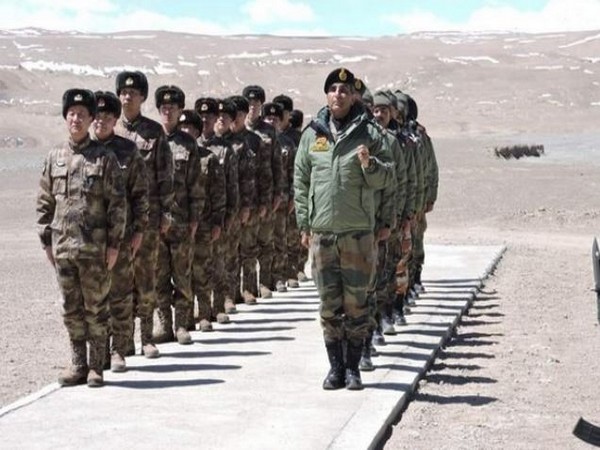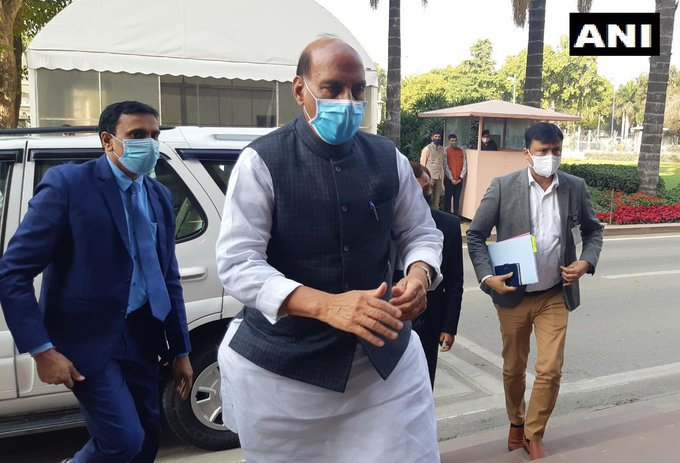The border dispute between India and China in the eastern Ladakh region, which has been going on for the last ten months, is now going to end. Defence Minister Rajnath Singh on Thursday announced in the country’s parliament that India and China have agreed to end the ongoing standoff in eastern Ladakh.
Also read: China’s Power Tactics: Are These Viable??
The armies of both countries will retreat their respective forces from the North-South area of Pangong Lake. There was a lot of tension on the Line of Actual Control (LAC) since last year.
Thousands of soldiers were deployed, an altercation took place and even bullets were fired. But ultimately both India and China have reached a consensus that this dispute should be ended.
What led to Disengagement?
The dispute between India and China started in April 2020, when the Chinese army crossed the LAC near Pangong Lake. At the same time, China refused to accept the old LAC, and reached up to Finger 4 of Pangong Lake and started building its camps there. However, as per India’s claim, LAC goes till Pangong Lake’s Finger 8 but China continues to refuse to accept it.
We have reached an agmt with China for disengagement on South & North Pangong Lake. Disengagement from forward areas will take place in a phased manner and will be verified at every step, says Defence Minister @rajnathsingh in Rajya Sabha#IndiaChina #IndiaChinaBorde pic.twitter.com/oitj9wbrlg
— CNBC-TV18 (@CNBCTV18Live) February 11, 2021
India worked on several fronts to deal with the standoff. In April, when China posed a challenge near Eastern Ladakh, India also increased its military presence on the LAC. The presence of the army on the LAC was increased by the government when China deployed about ten thousand soldiers, India also deployed the same number of soldiers on the LAC. Not only this, in the month of May, tanks were deployed by India at the China border. Over time, India’s vigilance increased and by September-October, the number of soldiers had reached 60 thousand. Type 15 Light Tanks, Infantry Fighting Vehicles, AH4 Howitzer Guns, HJ-12 Anti Tanks Guided Missiles, NAR-751 Light Machine Guns, W-85 Heavy Machine Guns were deployed from India amid tension on the China border. On the army front, tensions between India and China reached the zenith in the month of June, when Galvan Valley clash took place. In this clash, 20 soldiers of India were martyred, while China also suffered a great loss. Apart from deploying on the ground, the Indian Army also recorded its strong presence in the sky. In the skies of Ladakh, Tejas, Rafael, MiG, Apache, Chinook and many army aircraft and air force personnel took the situation into their hands and conveyed a clear message to China.

Delhi dealt matter with a high hand; the army was given a free hand from the Modi government and insisted on resolving the issue at the military level itself. Apart from this, when there was no talk at the military level, then NSA Ajit Doval, who is said to be an expert, took the front. Also, the government held talks on its behalf at the level of Foreign Minister, Defence Minister.
Apart from military diplomacy, India took strict measures towards China. Many Chinese apps were banned by the government, many big companies in the country had to lose their hands and a different atmosphere was created in the country on the subject of Chinese investment.
What next?

In the Rajya Sabha, Defence Minister Rajnath Singh told that when both the armies withdraw completely, after that there will be a meeting between the two countries within 48 hours. China will place its troops in the North Bank East of Finger 8, India will place it on its permanent base near Finger 3. A similar method will be adopted with the South Bank. For some time, petrol has been abolished at the temporary level.
